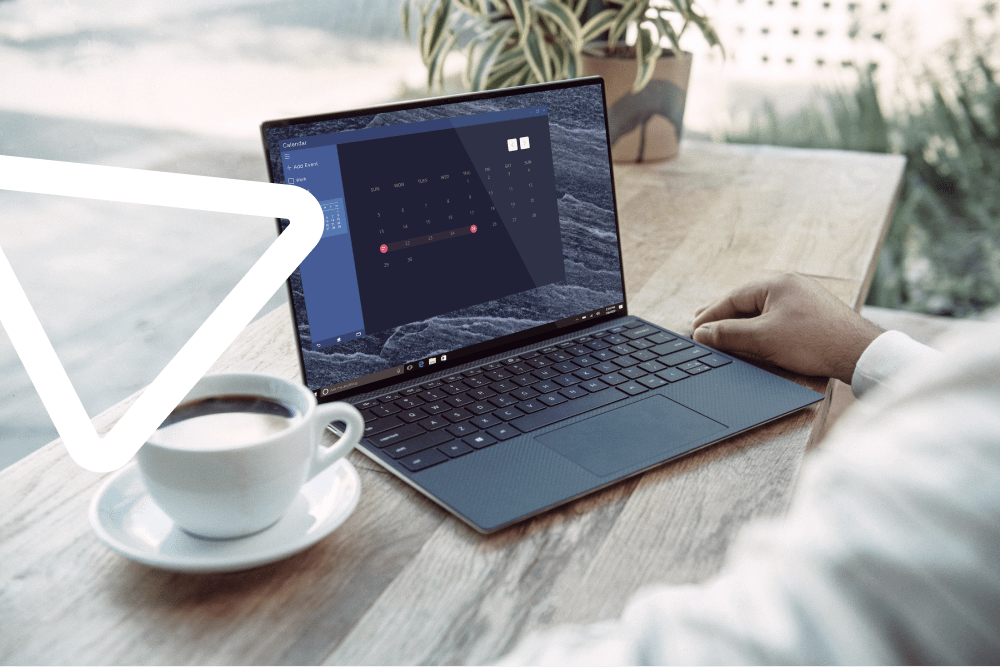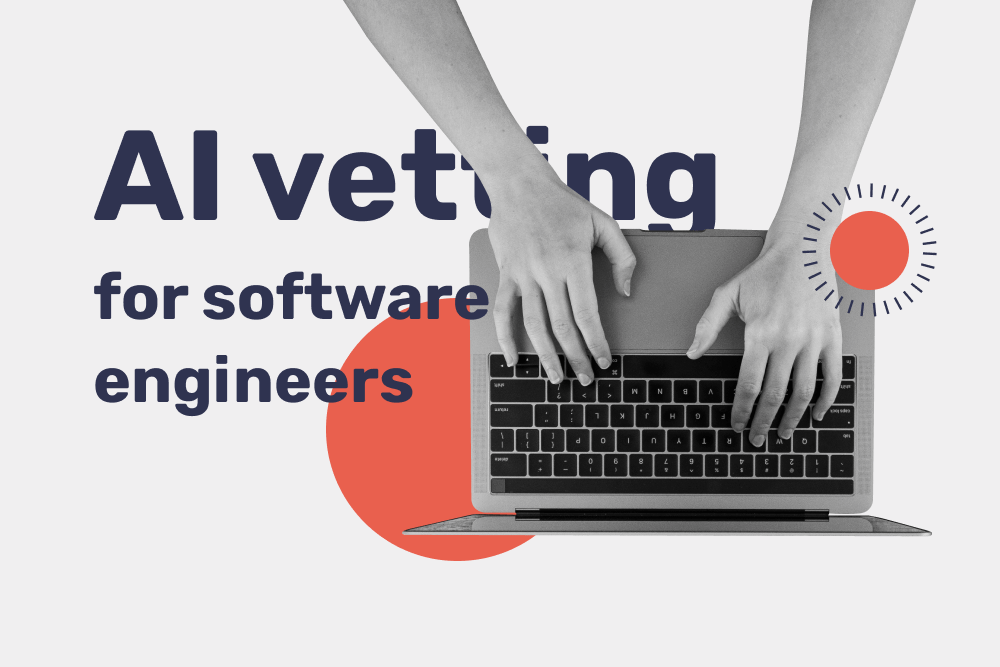Although the pandemic brought serious challenges to all spheres, we still have one thing to thank it for. Recruiting engineers internationally turned out to have essential benefits, starting from access to the global talent pool and specialized skills to cost savings and more. That’s why remote tech interviewing has become a popular trend in global hiring and is unlikely to fade away.
At the same time, interviewing candidates remotely is more complex than it seems at first sight, especially in the tech industry. When communicating with a candidate via video call, an interviewer might misinterpret statements or non-verbal reactions, the connection might drop or the mic quality might let either you or your candidate down. Not to mention bottlenecks related to assessing technical skills, like remote environment limitations, tool familiarity, technical issues, and more. If you want to find out how to conduct technical remote interviews, consider checking our recent article:
As a company that specializes in finding and attracting tech talent globally, we at Bridge know the ins and outs of the virtual interview process and will gladly share some tips with you. Further, you will learn how to address remote interview challenges and nail your hiring campaign. We will also share the experience of Shopify and how it managed to grow its team to a staggering 10K+ employees thanks to remote hiring.
Virtual interview tips to improve hiring
Virtual interviews differ from traditional on-site meetings, there’s no secret about that. So in order to make your remote interview process smooth and productive, here are some remote interview best practices you can consider. And in case you want to learn ways to asses the tech skills of your remote applicants, check out our article below.
Inform a candidate on interview details
After shortlisting candidates and scheduling interviews, make sure you provide each applicant with interview details, including the date, time, and tools you plan to use. Don’t forget to mention your colleagues who will participate in the interview (if any) or communicate a task that should be prepared beforehand.
If all details are clearly agreed upon, both the interviewer and the interviewee feel more at ease. No need to explain to a candidate how to use this or that platform or spend time presenting everyone participating in the interview. It helps focus solely on assessing applicants’ hard and soft skills without being distracted by organizational issues.
Prepare in advance
A potential candidate is not the only person to get ready for a remote job interview process. Be it your first or tenth interview, you, as an interviewer, should also make all the required preparations to ensure a structured interview procedure. Consider time zones, confirm details, and review the candidate’s resume and other materials submitted to come up with suitable questions. Test a videoconferencing platform you are going to use and ensure you know how to use features like screen sharing, and think of potential technical issues and how to address them quickly.
When getting ready for the interview, you may seek assistance with AI-powered tools like ChatGPT. Learn more about how to use ChatGPT in recruitment and hiring in our related article:
Recruitment ChatGPT: 5 Ways to Successfully Use AI in Your Hiring Process
Choose the right remote interview tools
There is a variety of tools available for conducting remote interviews, each offering unique features to facilitate effective communication and evaluation. For starters, you have to choose a platform for an interview to take place. The most popular ones are Google Meet, Zoom, and Microsoft Teams.
Next, you have to think of solutions that will help you assess technical skills, like Codility or CodeSignal. For example, Codility provides online tests and assessments to evaluate candidates’ coding proficiency, problem-solving abilities, and algorithmic skills, while CodeSignal allows interviewers to create customized tests tailored to specific role requirements. Get acquainted with other platforms for vetting tech candidates and pick the one that fits your needs in our blog post below.
The Process of Vetting Tech Candidates Remotely: Automated Tools and Best Practices
Describe your company culture
Apart from finding out all about a candidate, you should also present your organization properly to attract a potential employee. Describe your company values and show why a candidate would find it interesting to join your team. But don’t be stereotypical describing your company in a plain way using words like transparency, agility, strong collaboration, and so on. Such an approach won’t impress anybody, so try coming up with more creative ways to present your company.
For example, you can provide some interesting stories or successful case studies. Besides, it would be great to highlight diversity and inclusion and show how you work towards achieving it. You can also showcase your company’s approach to work-life balance, be it flexible work hours or a four-day working week, and more. By presenting your company culture in a unique way, you create an overall picture of what potential employees can expect, and therefore, help them understand whether they would want to become a part of your crew.
Examine the candidate’s remote working habits
Though 61% of employees like working from home, not everyone is suitable for remote work. So, when interviewing to fill a tech position, it’s crucial to assess if a person is remote-ready. Your main task here is to see whether a potential employee is self-disciplined, and good at time management and collaboration in a virtual setting. At this stage, you can ask questions like “What tools have you used when working on remote projects? How do you ensure a productive workspace when working remotely? How do you prioritize tasks?”
Sure thing, you will get a full picture of how a person works from home only having cooperated with them, but this way you can see if they are aware of all the challenges and responsibilities associated with out-of-office work.
The above-mentioned tips are based on our own experience in sourcing engineers for various clients, and now let’s see how world-known companies handle the remote work hiring process.
Case in point: how Shopify built a team of 10,000 employees using remote interviews
Shopify is an all-in-one e-commerce platform to start, run, and grow business. According to the information on its website, Shopify started with 5 people and now employs more than 10,000 specialists. We decided to look at the tech interview process in this company and learn from its experience.
Overall, the company describes itself as the one supporting candidates at every stage of the interviewing process and helping them pass the interview with ease and confidence. They distinguish four interview stages they use for hiring tech candidates:
- The life story. It’s a one-hour conversation with an interviewer in a friendly manner, where a candidate tells about their life, previous experience, hobbies, and anything they think is appropriate. The goal of this “pleasant discourse” is to get acquainted with a potential employee and understand what kind of person is on the other side of the screen.
- Coding exercise. This stage is conducted by a technical specialist, like a data scientist or software developer. It is a 40-minute interview aimed to assess analytical thinking and problem-solving skills. It works like this. Using CoderPad, a platform for tech skills assessment, a candidate writes a code based on the task given and explains his steps to the interviewer. The interviewer can also answer any questions the applicant might have and share their feedback on the way.
- Pair programming. Throughout this stage, a candidate works together with a developer from the Shopify team. But it’s a candidate who writes the code, while the Shopify’s developer is there to observe and provide assistance if needed. Shopify encourages candidates to ask clarifying questions if something is beyond their understanding to see how they behave to address challenges. The goal here is to define how the candidate can work in a team.
- Technical deep dive. A task for this stage is given beforehand. A candidate prepares to talk about their previous projects, describing technical decisions, architectural setup, challenges and failures, lessons learned, and more.
For example, recruiters at Bridge understand the technology and can accurately evaluate candidates’ proficiency. Our interviewers communicate with potential employees to hear specific technical details, so applicants are welcome to use a whiteboard or slides if they feel that will help to explain their work or achievements, but it isn’t expected.
Streamline the remote interview process with Bridge
When planning a remote interview process, you can use our tips that fit your personal needs to fine-tune the process. One last thing to note here would be that virtual interviewing requires thorough preparation and scheduling, so be ready to plan your hiring campaign beforehand. Just like physical interviewing, remote interviews can take a lot of time, and sudden challenges may appear, so if you haven’t dealt with remote hiring in the past, consider reaching out for help. Hiring experts from Bridge know the remote interview process from A to Z, so we can help you find the needed talent without much trouble.
At Bridge, we offer two types of services ‒ IT staffing and sourcing-as-a-service. IT staffing will help you add extra talent to your team for short or long-term engagement. All you have to do is create a job requisition on our platform and we will start sourcing candidates based on your requirements. Our sourcers meticulously screen each applicant and vet their skills to provide you with the best fit. Finally, a client pays only a daily or monthly fee for the actual work done, eliminating costs for sourcing, recruitment, training, and more.
When it comes to sourcing-as-a-service, this option is a perfect fit when you don’t have time for a long and tiresome hiring campaign. Using our proprietary data engine for talent sourcing, our team will narrow the talent pool and provide you with a list of pre-vetted candidates. On average, we provide 15-30 candidates a month.
If any questions are left, contact our team and we will set up a meeting to discuss your project in detail!



